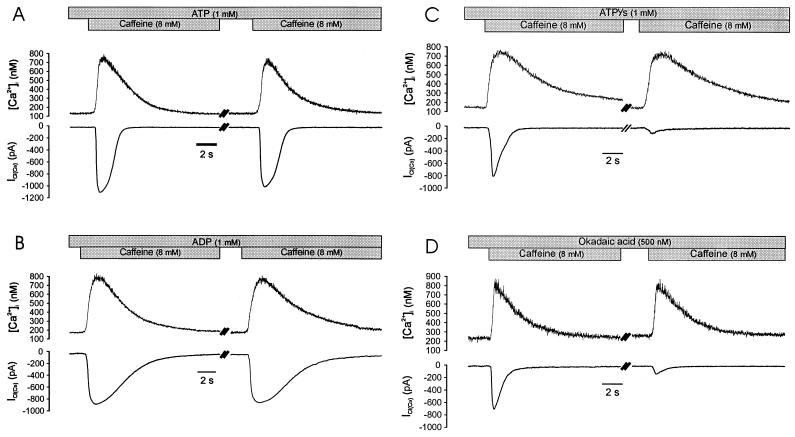Figure 6.
The phosphorylation-dependent decay of ICl(Ca) results from channel inactivation. (A) Consecutive exposure to caffeine (cells were dialyzed for 5 min before first application and exposed a second time after 5 min) results in equivalent increases in [Ca2+]i and only a slight decline in the magnitude of ICl(Ca). Note that the current decays before the decline in [Ca2+]i. (B) Substitution of ADP for ATP in the patch pipette results in the typical slowed rate of ICl(Ca) decay but does not alter the current amplitude following a second exposure to caffeine, indicating that channels are available to open. (C) Conversely, intracellular dialysis of ATPγs results in a smaller initial ICl(Ca) and virtually no response on the second application (despite the fact that the [Ca2+]i response was normal), indicating that calcium-activated chloride channels were not available to open. (D) Dialysis of okadaic acid also inhibited the initial caffeine response and almost abolished the subsequent response. All cells were clamped at −60 mV.

